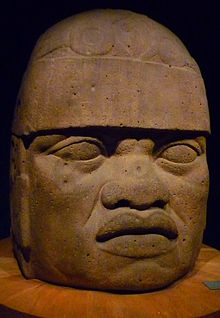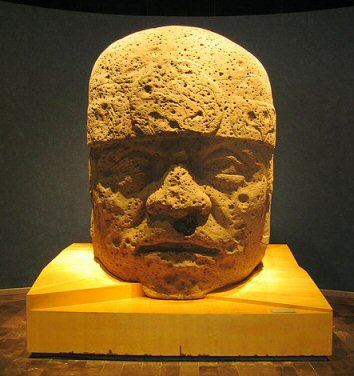San
Lorenzo was the largest city in Mesoamerica from roughly
1,200 B.C. to 900 B.C. at which time it had begun to be
overtaken by the Olmec centre of
La Venta.
By 800 BCE, there was little or no population, although
there was an important re-colonisation of the San
Lorenzo plateau from 600 to 400 BCE and again from c.
800 to 1,000 B.C.
San
Lorenzo seems to have been largely a ceremonial site, a
town without city walls, centred in the midst of a
widespread medium-to-large agricultural population. The
ceremonial centre and attendant buildings could have
housed 5,500 while the entire area, including
hinterlands, could have reached 13,000. A royal
processional aligned to the north-south axis of the
plateau led the way to the centre. At the centre of the
site are two palaces: the San Lorenzo Red Palace and the
Stirling Acropolis. The Red Palace was a royal residence
with a platform substructure, red floors, basalt roof
support, steps and drain. The Stirling Acropolis may
have been the sacred residence, and is surrounded by a
pyramid, E-group and a ball-court.
San
Lorenzo also boasted an elaborate drainage system which
used buried, covered, channelled stones as a type of
"pipe". Some researchers have inferred that the purpose
of this system was not only to provide drinking water
for the population but for ritual purposes as well, and
that the rule was "intimately linked to the figure of a
patron water supernatural".
(2)


